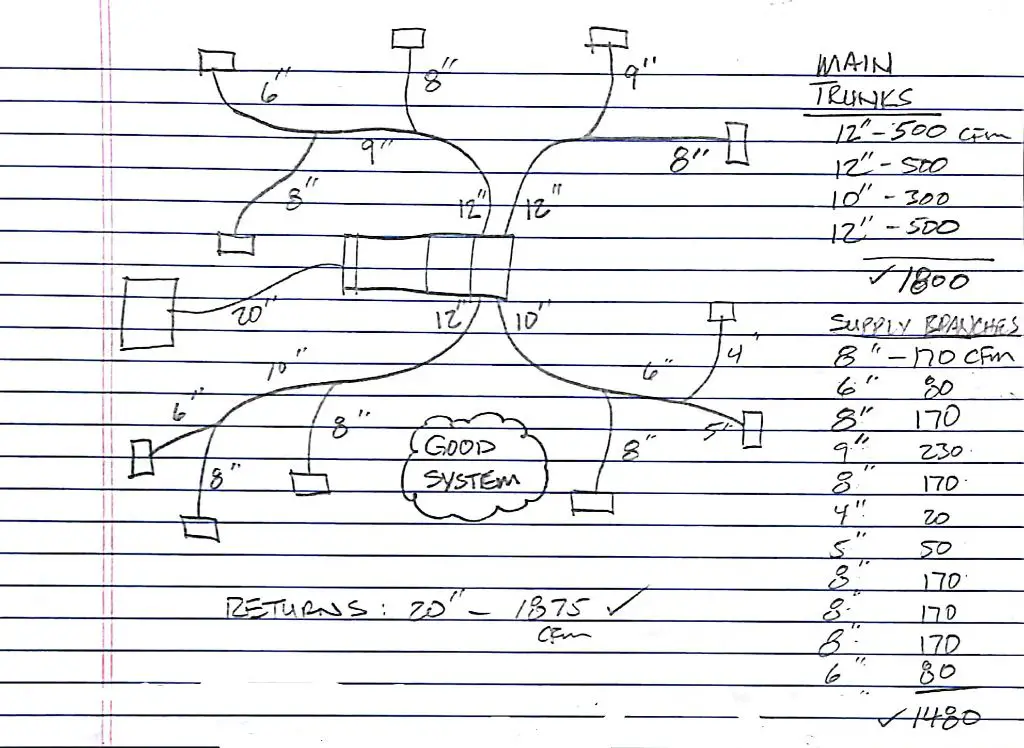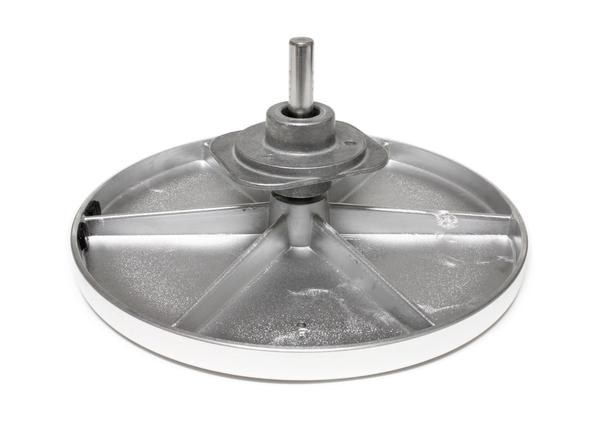How Many Cfm Will A 6 Inch Flex Duct Carry?
Airflow, measured in cubic feet per minute (CFM), is the volume of air moved through an HVAC system over a certain period of time. Proper airflow is critical for heating and cooling systems to function efficiently and provide adequate climate control. When airflow is restricted, it can lead to inconsistent temperatures, high humidity, mold growth, and increased utility bills. Ensuring HVAC systems have sufficient CFM capacity based on the size of the space is key for occupant comfort, indoor air quality, and proper system performance.
Calculating the recommended CFM for any HVAC component like ductwork or vents allows installers to size them correctly. Flex duct capacities specifically depend on the duct diameter and various factors that restrict airflow. Understanding optimal airflow rates through flex ductwork helps prevent insufficient air delivery in different rooms. This article will cover how to determine the CFM capacity for a 6-inch flex duct, typical reductions, and tips for maximizing airflow.
Sizing Flex Ducts
When sizing flex ducts, it’s important to consider factors like the length of the ductwork, the number of bends, and whether insulation is used, as these can affect the airflow capacity. The length of the flex ductwork is important because the longer the duct, the more friction loss occurs as air travels through it, reducing airflow. Each bend in the ductwork also increases friction loss and turbulence. Using insulation around flex ducts helps improve efficiency by reducing heat loss or gain through the duct walls. Insulated flex ducts can maintain more consistent air temperatures and have lower friction losses. Proper sizing takes these factors into account by adjusting the duct diameter to compensate for expected losses based on the duct length, number of bends, and insulation.
According to The Engineering ToolBox, a 6-inch diameter flex duct can have a maximum capacity around 800 CFM depending on the duct’s velocity and friction losses. However, several online duct sizing calculators like those at Ducting.com and Hunker recommend adjusting this capacity lower based on the duct’s setup to account for losses. Most flex duct sizing guidance suggests limiting velocities to under 1000 FPM to avoid excessive noise and friction.
6-inch Flex Specs
6-inch flexible duct, also known as flex duct, has some standard dimensions and capacities that are good to know when sizing ductwork. According to Home Depot, a common 6-inch insulated flex duct has an exterior diameter of about 9.5 inches and an interior diameter of approximately 6 inches.
The wall thickness on insulated 6-inch flex duct is around 1.75 inches to allow for insulation with an R-value of R6 (source: Home Depot). This provides thermal insulation to prevent heat loss or gain through the ductwork.
In terms of capacity, a 6-inch diameter flex duct can carry approximately 100-150 CFM per linear foot, with friction losses around 0.08 inches of water per 100 feet at 100 CFM (source: Sigler Commercial). However, the actual capacity depends on many factors covered later.
Recommended Airflow

When sizing flex ducts for an HVAC system, it’s important to understand the recommended airflow capacity. For a 6-inch diameter flex duct, the typical recommended airflow capacity is around 100 CFM (cubic feet per minute). Most HVAC experts recommend limiting 6-inch flex ducts to no more than 100-125 CFM for optimal performance. Exceeding this airflow can lead to increased turbulence and friction, reducing efficiency.
According to HVAC duct sizing charts, such as those provided by manufacturers like Johns Manville, a 6-inch diameter duct can handle around 100 CFM before friction losses start becoming a major factor. Testing by HVAC organizations like ASHRAE has also found that 6-inch flex tops out around 100-120 CFM before experiencing a steep increase in pressure loss per unit of length.
In summary, the typical recommended airflow for a 6-inch diameter flex duct is 100 CFM. This capacity provides good airflow while keeping efficiency high. Exceeding 100 CFM in a 6-inch flex duct results in turbulence and resistance that lowers system performance. For higher airflow needs, an 8-inch or larger diameter flex duct is recommended.
Calculating CFM
The airflow capacity of 6-inch flexible ductwork is determined using duct sizing charts or duct calculators. According to duct sizing charts, 6-inch round flexible duct can carry approximately 100 CFM. However, these are general guidelines and the actual CFM capacity depends on various factors.
More precise CFM calculations require entering duct dimensions into duct sizing calculators like the free online Calculatoredge Duct Calculator. For a 6-inch diameter flexible duct that is 25 feet long, the calculator estimates it can carry 92 CFM.
When using duct sizing charts or calculators, it’s important to input accurate duct measurements and account for elbows, branches, registers, grilles, and any other components that may restrict airflow. Calculating the precise CFM capacity requires considering the complete duct system.
Factors Reducing CFM
There are several factors that can reduce the airflow capacity in flex ducts. According to the Energy Vanguard, the primary cause is friction. As air moves through the duct, it rubs against the inner surfaces, losing energy and reducing airflow (source). Bends in the ductwork also increase friction and turbulence, further decreasing airflow.
The length of the ductwork is another important factor. Longer duct runs have more surface area for friction and turbulence to occur. Pressure drops increase with length, so CFM capacity decreases (source). Excess slack and sags can also reduce airflow by creating more friction and pressure drop.
Leaks are another major cause of reduced airflow. Gaps in the connections and punctures in the duct allow air to escape before reaching the vents. Properly sealing joints and repairing any holes is critical for maintaining designed airflow rates (source). Regular inspections and maintenance help minimize leaks.
Improving Airflow
There are several strategies that can help improve airflow through 6-inch flexible ductwork:
Using shorter duct runs with fewer turns and elbows can reduce friction and turbulence, allowing air to flow more freely. The ACHR News recommends keeping duct runs under 25 feet and using long radius elbows instead of sharp 90 degree turns.
Insulating ductwork reduces heat transfer and friction, helping maintain air velocity. Flex ducts should be wrapped with insulation rated R-6 or higher. Tape all seams to prevent leaks.
Removing excess flex duct can improve airflow. Do not double back extra ductwork – cut it to the proper length. Keep ducts as straight as possible between connections.
Strategic use of duct booster fans can help push air through long duct runs or sections with high static pressure. Consult an HVAC professional to properly size and place booster fans.
Finally, regularly cleaning ductwork removes dust buildup and debris that can restrict airflow over time. Vacuum accessible ducts annually.
Testing Airflow
It’s important to measure the actual airflow coming out of your 6-inch flex ducts. The potential airflow based on duct size can be reduced by factors like bends, kinks, and clogs. There are a few methods for testing actual airflow:
Use an anemometer, which measures air velocity. Place the anemometer at duct vents and multiply the air velocity (FPM) by the duct area to calculate CFM. Anemometers are affordable and easy to use. Make sure to take multiple readings and average them (retrotec.com).
Use a duct blaster, which seals to the duct opening and measures pressure at a calibrated fan flow rate. The pressure measurement is used to calculate CFM. Duct blasters are more complex but provide very accurate CFM measurements (birdinsulation.com).
Use a flow hood, which captures all the air coming out of a duct and directly measures the CFM. Flow hoods are simple to use but can be expensive.
Testing actual airflow at multiple vents will determine if the flex duct is delivering the expected CFM based on its size. This allows you to identify and address any airflow reductions.
Maintaining Ducts
Regular maintenance and cleaning is important for 6-inch flex ducts to ensure optimal airflow. Over time, dust and debris can accumulate inside the ducts and restrict airflow. Flex ducts can be cleaned by professionals using specialized vacuum equipment and brushes designed not to damage the flexible material (https://www.airprohawaii.com/2021/07/01/can-flexible-ducts-be-cleaned/).
DIY cleaning is possible using a duct brush attachment for a vacuum cleaner, but care must be taken not to tear the inner lining. Any tears or holes in the duct can further reduce airflow. Small punctures may be repairable using aluminum tape according to manufacturer specifications.
For severely damaged sections of duct, replacement may be necessary. All joints should be properly sealed with mastic or foil tape to prevent leaks. Regular inspections and maintenance helps keep flex ducts clear and ensures they meet proper airflow requirements.
Conclusion
In summary, calculating the proper CFM airflow for flex ducts is an important factor in HVAC system efficiency and performance. A 6-inch diameter flex duct is designed to carry between 300-350 CFM when new and installed correctly. However, the actual airflow may be reduced over time due to factors like kinks, bends, length, and debris buildup inside the duct. Maintaining and replacing old flex ducts ensures optimal airflow delivery to rooms for comfort and energy savings. Properly sizing flex ducts, verifying CFM output, and performing duct maintenance should all be part of a complete HVAC strategy for maximum efficiency.





